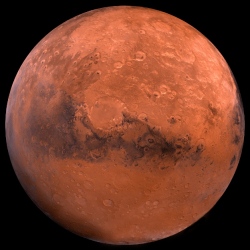
In many ways, NASA no longer has the resources to do the things we want (and need) to do to explore the stars. NASA has a plan to get us to Mars, but its mission is long and drawn out, and even getting samples of rocks back from the red planet could take decades.
However, private space exploration companies are stepping up to the challenge, and a company called BoldlyGo has announced its own mission to Mars to collect samples of dust to bring back to Earth. And they plan to do this by the year 2020.
BoldlyGo’s mission is the Sample Collection to Investigate Mars (SCIM). SCIM will send a spacecraft into the Martian atmosphere, collect samples of dust there, and then come back to Earth with those samples for scientists to study. It differs from NASA’s Mars 2020 mission in that it doesn’t need to land on the planet to collect materials, which should make things much simpler.
Also, NASA’s Mars 2020 mission doesn’t yet have a plan to return samples back to Earth, that mission involves collecting rocks and building caches on the planet for later retrieval. BoldlyGo stresses that their mission isn’t a replacement for what NASA wants to do, but it could be a precursor, perhaps giving us a better idea of what to expect once NASA gets their 2020 mission there.
Collecting dust might not seem like such an achievement, especially when we really want to get samples from Mars’ surface, where we might find traces of past life. However, in 2018, when the bullet-shaped SCIM launches, there are predicted to be large dust storms across the planet that will send all kinds of stuff up into its atmosphere.
SCIM will skim the atmosphere, about 25 miles above Mars’ surface, and use a "catchers mitt" tool filled with aerogel to scoop up anything it runs into. The dust that it catches will be sterilized with heat and then collected in the capsule of the spacecraft.
The spacecraft will then shoot past Mars, come around the other side, undergo an orbital correction maneuver, and head back to Earth, safely landing in a desert where scientists can collect it.
